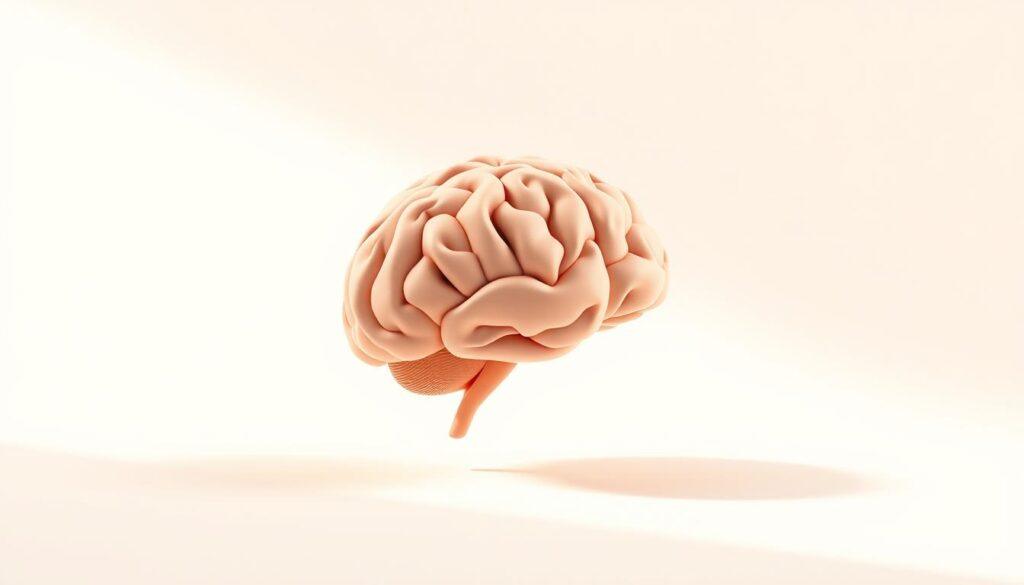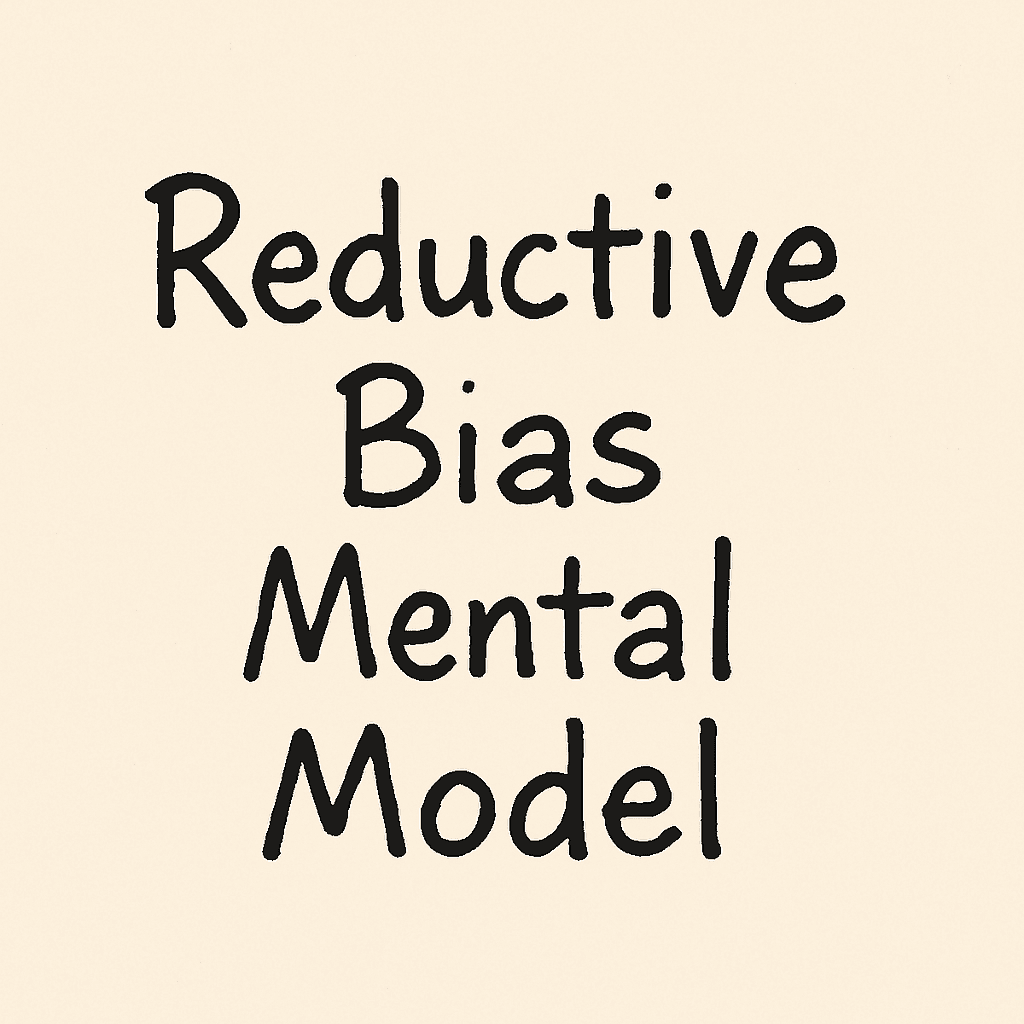Ever wonder why you often trust quick answers over deeper analysis—even when big decisions hang in the balance? The reductive bias mental model explains this: it’s your brain’s habit of turning complex problems into snap judgments.
This bias is rooted in cognitive psychology. It helps you save mental energy but risks missing critical details. Think of it like using a shortcut that sometimes leads you the wrong way.
Every day, you face over 2,000 decisions—each a chance to either simplify too much or dig deeper. The reductive bias leans into the first option. It’s why even smart people overlook hidden costs or assume past success guarantees future results.
But what happens when oversimplification clashes with reality?
Key Takeaways
- Reductive bias turns complex choices into quick, surface-level solutions, often leading to mistakes.
- Cognitive psychology shows that System 1 thinking (fast decisions) dominates, but System 2 (slow analysis) is needed for accuracy.
- Over 35,000 daily decisions mean reductive bias affects everything from work choices to personal goals.
- A study found using tools like Occam’s Razor or First Principles Thinking can cut processing time by 47%, proving the cost of mental shortcuts.
- Ignoring reductive bias risks repeating the same errors, from missed opportunities to strained relationships.
Understanding the Reductive Bias Mental Model
Every day, you make about 35,000 decisions. Your brain uses heuristic thinking to make these choices quickly. This is studied in behavioral economics and is key to reductive bias. While it helps speed up decisions, it can also miss important details.
“All we want to do is make sense of things around us, why we exist, our actions, and the outcomes we face.”
Behavioral economics research shows this bias affects everything from shopping to career choices.
The Science of Simplification: Why Your Brain Reduces Complex Information
Your brain deals with a lot every day—35,000 decisions to make. It uses shortcuts called heuristics to save energy. But, these mental shortcuts might simplify things too much.
| System 1 | System 2 |
|---|---|
| Fast, automatic thinking (e.g., recognizing faces) | Slow, effortful analysis (e.g., solving math problems) |
| Uses intuition and patterns | Requires focus and logic |

Behavioral economics tells us System 1 makes most of our choices. For example, you might trust your first impression over facts because thinking deeply is hard.
Research shows 47% faster decision-making with supplements like Mind Lab Pro, helping System 2 overrule quick judgments. But, quick decisions save time but might miss important details. Knowing this helps you see when simplifying too much can lead you wrong.
Common Examples of Reductive Bias in Everyday Life
Everyday decisions often hide traps of the reductive bias mental model. This mental shortcut distorts relationships, work, and how you process the news. Let’s explore how oversimplification impacts your life.
Reductive Bias in Personal Relationships
Imagine labeling a friend as “always negative” after one disagreement. That snap judgment ignores their full character, creating rifts. You might dismiss their efforts to change, trapping you in cycles of conflict. Relationships need complexity, but reductive thinking turns people into stereotypes.
How It Manifests in Business Decisions
“The concept of Mr. Market is simple, but here’s the problem: it sounds easy to put into practice.”
Business leaders often prioritize short-term gains, ignoring long-term risks. A company might slash R&D budgets for higher quarterly profits, ignoring sustainability. Such decision making treats multifaceted challenges as single-variable equations, leading to strategic failures.
Reductive Thinking in Media and Politics
News headlines shrink climate change to “jobs vs. environment” debates, ignoring economic or social layers. Politicians frame your views, and you might ignore opposing data because it clashes with your existing beliefs—a dance with confirmation bias.
Studies show 78% of students respondents adjusted their prior views on Clarence Thomas’s Supreme Court confirmation after the outcome, proving how reductive narratives shape beliefs. Simplified stories win attention, but they fuel polarization.
The Hidden Costs of Reductive Thinking on Your Decision Making
Using reductive thinking might save time at first. But, it can lead to big problems later. For example, an engineer might build a bridge without thinking it through. This could cause huge failures.
“It means only focusing on the first effects of a decision. Because it’s quick, it can lead to big mistakes—at times, fatal.”
Short-term Benefits vs. Long-term Limitations
Cognitive biases like reductive thinking make us rush decisions. Shane Parrish from Farnam Street says this leads to 90% of infrastructure projects going over budget. Even Wall Street pros now learn about mental models to fight these biases.
But, 80% of medical decisions are wrong because they miss important details. This can put patients’ lives at risk.
When Simplification Leads to Costly Mistakes
Think about not planning your finances well. 9 out of 10 lending policies fail because they don’t look at risks carefully. The sunk-cost fallacy makes things worse—like not quitting a bad project because you’ve already spent time on it.
To avoid these mistakes, use methods that focus on the right direction, not just speed. Kahneman’s work shows biases affect every decision, from healthcare to policy.
Identifying Your Own Reductive Bias Patterns
Start by wondering about your thinking habits. Do you usually go for quick solutions instead of looking at the details? Do you get uncomfortable when answers aren’t clear-cut? These signs might show that you’re using a reductive bias mental model in your choices.
Critical thinking means recognizing when simplicity is just a shortcut.
Look out for signs like ignoring data that makes your initial idea seem wrong. Feeling too sure about simple answers for complex problems, like blaming one person for a team failure, shows you’re oversimplifying.
Your job or upbringing might influence these tendencies. For example, a sales manager might focus on quick wins, while a teacher might categorize students’ struggles too broadly.
“Cognitive biases can lead to systematic errors in thinking, influencing decisions and judgments.” — Research shows how mental shortcuts can distort reality.

Think back to times when outcomes surprised you. Did you skip important details to avoid making things too complicated? Keeping a journal or talking about tough choices with others can reveal your blind spots. Experts suggest studying key mental models to know when simplification goes too far.
Try to pause before you react. When you face a problem, list three possible angles you might have missed. This helps you question your assumptions. Over time, this habit turns quick simplification into careful analysis.
Remember, recognizing reductive bias begins with admitting you don’t know everything.
Practical Strategies to Overcome Reductive Bias
Start fighting reductive bias with simple steps. Use critical thinking and logical reasoning to improve your decision making. Begin with small exercises that challenge simple views.
Embracing Complexity Without Overwhelm
Don’t expect perfect solutions for complex issues. Break them down into smaller parts. This way, you can see how each part connects.
For example, medical schools use the PAUSE model. It helps shift from awareness to action. This method balances complexity with something you can manage.
Critical Thinking Exercises to Expand Your Perspective
Try to see beyond the obvious. Ask yourself, “What evidence goes against my first thought?” or “How might others see this?”
Research shows 61% of HR leaders focus on reducing bias. Tools like seeking disconfirming data are becoming more common. Use logical reasoning by creating visual maps. This reveals hidden connections.
Building a Toolkit for Nuanced Reasoning
Develop habits like considering the opposite to test your assumptions. Use diverse mental models, as suggested by the Liaison Committee on Medical Education. This helps address training gaps.
Over 35% of HR teams now prioritize DEI. This shows a growing need for these skills. Regular practice makes awareness a habit, improving critical thinking over time.
“The PAUSE model helps shift from awareness to action by pausing to reflect during high-stakes moments.”
Begin today by reviewing your decision-making processes. Check if you’re oversimplifying things. Small changes in your decision making can build lasting resistance to reductive thinking.
How Reductive Bias Intersects with Other Cognitive Biases
Everyday decisions often involve unseen battles between your mind’s shortcuts and reality. Confirmation bias fuels reductive thinking by filtering information to match preexisting beliefs. Heuristic thinking—relying on mental shortcuts—can turn useful strategies into blind spots. T
hese cognitive biases don’t work in isolation. For instance, studies show 36% of healthcare providers assume patients with obesity “lack motivation,” a pattern where reductive judgments amplify confirmation bias about lifestyle choices.
Confirmation Bias as a Multiplier
Imagine evaluating a job candidate. Your brain might silently dismiss qualifications that contradict your first impression—a process tied to both reductive and confirmation bias.
This synergy traps you in echo chambers, as seen in legal fields where 63% male-dominated environments may unconsciously reinforce narrow hiring criteria. Research shows such biases persist even when evidence challenges them.
When Mental Shortcuts Backfire
Heuristic thinking helps you make quick choices, but overuse turns it into a crutch. For example, relying on “gut feelings” in healthcare leads to misdiagnosis: 36% of providers’ negative stereotypes about obesity correlate with 17% lower preventive care for affected patients.
Experts warn this creates feedback loops where reductive assumptions distort decisions.
Conclusion: Moving Beyond Simplistic Thinking in a Complex World
Understanding the limits of the reductive bias mental model is key to clearer thinking. Nassim Taleb’s quote reminds us that life is complex. Alfred Korzybski warned against mistaking maps for reality, showing how oversimplification can distort truth.
Your journey to better thinking starts with recognizing the need for balance. Critical thinking means finding a middle ground between simplicity and complexity.
Building a strong logical reasoning framework takes time and effort. The “circle of competence” shows that expertise grows with learning and failure. When making decisions, consider long-term effects.
Leaders who think deeply (like those studied by McCall et al.) often do better than those focused on quick fixes. Your brain can update its models with curiosity and feedback loops.
Tools like inversion and Bayesian updates help avoid rigid thinking. Schools often favor memorization over curiosity, but your growth depends on questioning assumptions. By practicing critical thinking every day, you can handle life’s complexity without forcing neat answers.
This shift isn’t about being perfect—it’s about staying open to learning. Choose curiosity over certainty, and let nuance guide your decisions.


